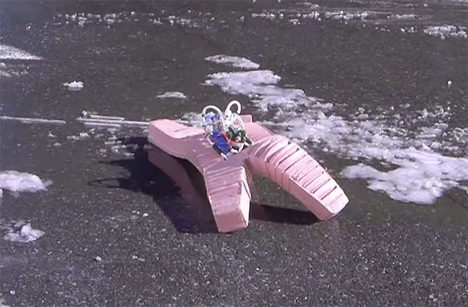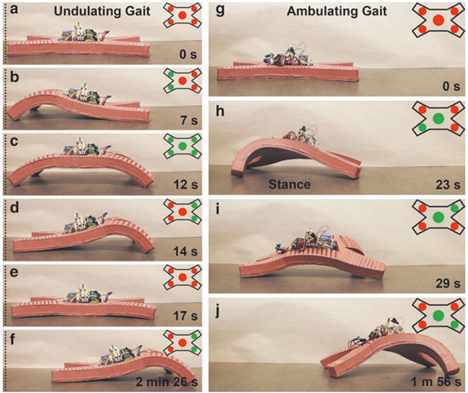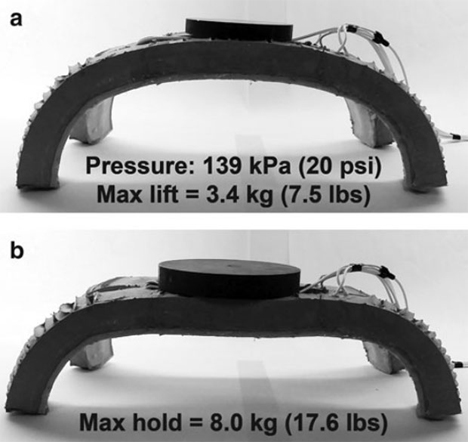
We were a little bit freaked out when the first soft-bodied, icky-looking, invertebrate-like crawling robot squirmed its way out of Harvard’s lab and into our nightmares. Now the design has evolved a few generations so that it no longer needs pneumatic tethers, so it can crawl around in the real world. Oh, and now it’s fire-proof, waterproof, freeze-proof, and acid-proof – so there’s about a 50/50 chance that future generations will be completely impervious to all of our defenses. Thanks, Harvard.
The all-terrain soft bodied robot was developed in Professor George M. Whitesides’ lab and, at first glance, looks kind of like a really ugly toy. Its silicone body is extremely durable, hence its imperviousness to just about anything that the world can throw at it. It keeps on working in subzero temperatures, gets back up after being run over by a car, walks through puddles up to five cm (about two inches), and can withstand 3,000 Kelvin (more than 4,900 Fahrenheit) methane flames for up to 50 seconds.

Besides being virtually indestructible, the rubbery robot can scuttle along surprisingly quickly at speeds up to 18 meters per hour (59 feet per hour). It’s still pneumatically powered, which gives it a good deal of strength: it can dead-lift 8 kg (17.6 pounds) or carry 3.4 kg while in motion. It can run for about two hours on battery power, though it has no sensors or smart capabilities built in.

Thankfully for us, the current version of the soft-bodied nightmarebot does have a weak spot built in: its controller, batteries, compressor, and other essential components are carried externally. This means that, while the robot can withstand all of the abuse above, it is still vulnerable if any of those things happen to its electronic bits. The Harvard lab hopes in the future to develop soft components to replace the rigid, vulnerable ones…and then we’ll see a truly indestructible robot worthy of its own movie franchise.

